Enve M730 wheels
Build:
- Chris King ISO hubs
- Sapim CX-Ray Spokes (32)
Measured Internal Rim Width: 30 mm
Blister’s Measured Weight:
- Front: 941 grams
- Rear: 1128 grams
- Total: 2069 grams
MSRP: $2100 and up ($3000 as built)
Bolted to: Trek Slash 9.8
Reviewer: 5’9” 155 lbs
Test Locations: Montana, Utah, & British Columbia
Test Duration: ~9 months
Intro
Enve’s 7 Series wheels have always been situated as a burlier wheelset — one notch down from their DH-oriented 9 Series wheels. That means that the 7 Series wheels are designed to take a beating, and it also means they incorporate some design features that aren’t found on Enve’s lighter-weight XC- and Trail-oriented wheelsets.
Enve has broadened their lineup in recent years — the basic offerings remain the same, with XC wheels (5 Series), Trail-oriented wheels (6 Series), Gravity / Enduro-oriented wheels (7 Series) and DH wheels (9 Series). But within those categories, Enve has added a bunch of rim-width options, wheelsets designed for Plus and Fat bikes, and one wheelset designed for e-bikes.
I’ve been spending time on the M730 wheelset, which is situated as an Enduro wheel, or at least well suited to longer-travel, all-mountain-type bikes. As the name implies, it has a 30 mm internal-rim width, and it can be bought as a rim only or laced up as a complete wheel (which is what I tested).
With any given wheelset, the question always comes down to balancing price, features, stiffness, weight, and durability. Enve wheels don’t come cheap, so that means that the M730 needs to knock it out of the park when it comes to incorporating the right features, balancing stiffness and compliance, and managing all of that while being pretty light and not too fragile. That’s a lot to ask for, so here’s how they did:
Construction and Features
The M7 wheels are, like most of Enve’s products, handmade in Ogden, UT. Enve isn’t the only company producing carbon wheels in North America these days, but they were one of the first. Moderate patriotism aside, laying up their carbon in house also means that they have an easier time prototyping different models, which seems to pay off when it comes to ride quality (more on that in a bit). It also means that Enve can make some nice touches like molding the spoke holes into the layup, which helps avoid weaknesses in that area that can arise from the more traditional method of drilling the spoke holes.
The most noteworthy feature of the M7 rim is Enve’s “Protective Rim Strip,” which is essentially a rim strip that’s incorporated into the design of the rim. The plastic-y strip serves two basic purposes. First, it’s meant to keep a tubeless tire inflated. As with any other tubeless rim strip, it seals off the spoke holes and creates a tight seal at the tire’s bead.
The second, more noteworthy purpose is pinch-flat prevention. The strip wraps up and over the rim’s sidewalls and acts as a thin bumper that is designed to reduce flats that come from pinching the tire between the ground and the rim. I’ll get into how well that actually works below, but in terms of the basic setup of the wheel, Enve’s rim strip has some clear upsides.
It’s a lot easier to set up than a taped-on rim strip, it’s much less prone to tearing than normal rim strips, and it’s pretty quick and easy to remove and replace in the event that I need to replace a spoke (or, for that matter, true the wheel since the spoke nipples are internal to the rim). The main downside I found is that Enve’s Protective Rim Strip doesn’t seem to create quite as tight of a seal at the bead — every tire I tried on these wheels would lose some pressure overnight (more so than most other rims with traditional taping), which is annoying.
The Other Parts of the Wheel
Enve makes the rims, but the rest of the wheel matters too. And as you’d expect for the price, everything is top shelf. You have a choice of Chris King or Industry Nine hubs, either of which are laced in a 32-spoke, three-cross pattern with Sapim CX-Ray spokes.
The wheelset I tested had Chris King hubs, which I have something of a love-hate relationship with. On one hand, they’re beautifully made, they have fast 120-point (3-degree) engagement, they roll remarkably quickly for having such high engagement, and they have a well-earned reputation for durability.
On the other hand, every Chris King hub I’ve ever had has come loose repeatedly, and the Chris King ISO hubs on the M730 wheels were no exception. The hubs have an adjustment where that slop can be tightened up, but they inevitably come loose again. Usually, after 500-1000 miles, the hubs settle in and stop coming loose, which was the case with these. They also have a little press-on spacer thing that sits on the end of the axle sleeve (up against the frame), and those spacers are prone to pop off when the wheel is out of the frame. I lost one in the dirt somewhere in Canada, which meant my rear hub was about 1 mm too narrow until I could order a replacement spacer.
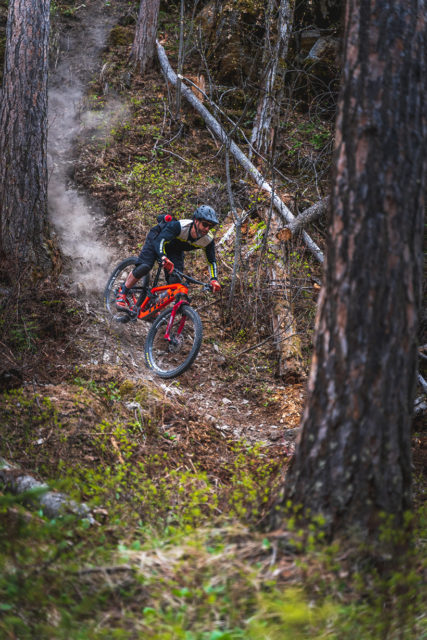
It’s easy to overlook the spokes in a wheel, but the Sapim CX-Rays are, in my humble opinion, the best spokes you can put on a mountain-bike wheel. They’re respectably light and impressively strong. Over time, spokes fatigue. Riding a wheel stresses the spokes, and eventually, those spokes have been stressed enough times that they start breaking. With some cheaper spokes, this can happen annoyingly quickly — on the Race Face Next R wheels that I reviewed last fall, the spokes started breaking at around 1000 miles and I had to rebuild the wheel (I chose CX-Rays for the replacements). But I have yet to fatigue a CX-Ray spoke to the point of breaking on any wheel. They will, of course, break eventually, but from my experience, it’ll take a loooong time.
It’s also worth noting that Chris King hubs and CX-Ray spokes aren’t cheap. This M7 wheelset has roughly $250 worth of CX-Ray spokes and $700 worth of Chris King hubs in it. This isn’t meant as a defense of the price of an Enve wheelset, but it’s worth considering when comparing these wheels to some other ~$1500 carbon wheelset that has generic spokes and hubs that are likely re-branded Novatecs with a freehub that’s likely to explode at any moment. It’s also worth noting that Enve recently announced a version of these wheels that retails for $2100, with some less expensive Industry Nine hubs.
Mounting and Setup
Setting up the M7 wheels was fairly uneventful. The Protective Rim Strip is the only thing that’s different from most other wheels, and for the most part, it didn’t really affect tire installation. With a tighter tire that required tools to mount, I had to be a little conscious to keep the rim strip situated (since it’s not glued to the rim in any way), but that wasn’t difficult at all.
As I noted above, I did find that tires tended to lose air overnight when set up on the M7 wheels. That happened with a few different tires from WTB and Maxxis, set up with Orange Seal and Stan’s sealant. All of those tires worked fine on other rims, and I tried replacing and re-seating the valve core, so my best guess is that Enve’s Protective Rim Strip keeps the tires from sealing up as well as they could. This was particularly problematic when I first mounted the tires — on the first ride, they actually went flat over the course of the ride. After that, it seemed like they settled in a bit and they’d hold pressure for a day or two, but I’d still need to top up pressure before pretty much every ride.
On the Trail
I’ve said it before, and I’ll say it again: when it comes to carbon-rim ride quality, Enve nails it. There’s no shortage of carbon rims that are quite stiff. They’re stiff laterally, and they’re stiff vertically. The vertical stiffness can make them feel a bit jarring on shorter-travel bikes. And the lateral stiffness can make them chatter around a bit through rough corners.
Enve manages to walk the line between making a more compliant wheel that’s comfortable in the vertical axis and can flex enough side-to-side to hold a better line through chop, but without making the wheel so noodly that it’s excessively flexy in hard compressions and bermed corners.
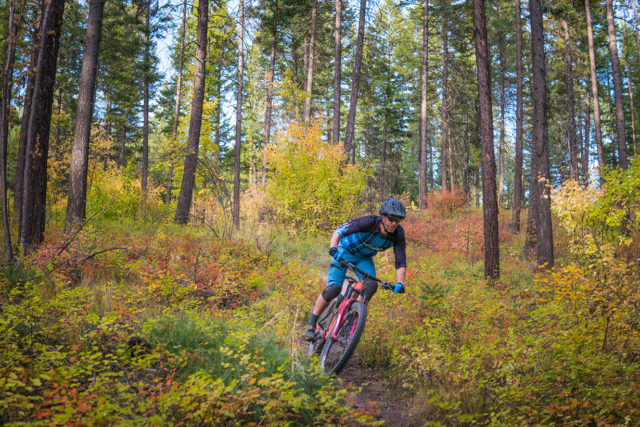
Switching between the M730 wheels and various other comparable wheels, the difference is noticeable — the M730 wheels are clearly more compliant. Now, this a somewhat complicated discussion, because some compliance is good, but too much compliance is bad, and the line between “just right” and “too much” is going to be a bit different for everyone and every bike. A big guy on a flexy frame might benefit from a stiffer wheel, whereas a small person on a super stiff frame might want as much compliance as a wheel can give them.
At ~155 lbs and riding these wheels on a Trek Slash, I’m going to call myself average to small, and the frame’s stiffness pretty average for an Enduro / long-travel Trail bike. My setup seems fairly middle of the road, and I’d say the compliance built into the M7’s worked well for me.
There were times in the hardest corners — the sort of berm that you can really dig into and it takes all of your strength to not get smushed down into your top tube — where I would have preferred a wheel that was laterally a bit stiffer. But that thought went out the door when I was skittering around a rooty mess of a corner and the wheel was doing a better job of tracking the line I wanted than pretty much any other carbon wheel I’ve ridden (or any aluminum wheel in recent memory).
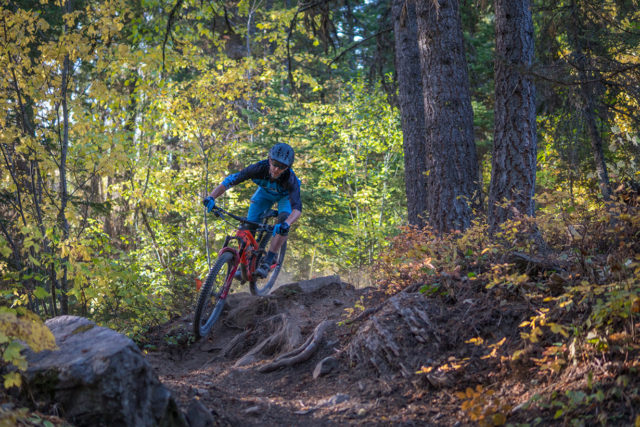
The other noteworthy talking point on these wheels is, again, the rim strip. Does it actually prevent flats? Well, I didn’t manage to get any pinch flats while riding these wheels, so… maybe.
Now just so we’re clear, the rim strip is supposed to help with pinch flats — where the tire gets pinched between the ground and the bead of the rim, and gets a little cut in it. The rim strip isn’t going to do anything for that spikey little stick that jabs itself into your tire, or the rock you sideswiped that ripped your sidewall open. But at least for me, pinch flats are my preferred method of letting all the air out of my tire at inopportune times.
And in my time on the M7’s, I didn’t manage to pinch flat, at all. Now, for a bunch of my time on the M7 wheels, I was running a heavier-casing tire (a “Tough” casing on a WTB Trail Boss), so I’d expect those to be harder to pinch on any wheel. But I also did some fairly stupid things in the name of testing durability (more on that below) that involved a lot of rim strikes. And despite all of those rim strikes, I still never pinched the tire. I did also run some other tires, including some Maxxis tires with an Exo casing, and I didn’t manage to pinch those, either.
So, is it possible to get a pinch flat with Enve’s rim strip? I’m sure. But, as best as I can tell, it’s significantly more difficult than on other wheels. I was skeptical that the little rim strip would make much of a difference, but based on my time, it seems like it does.
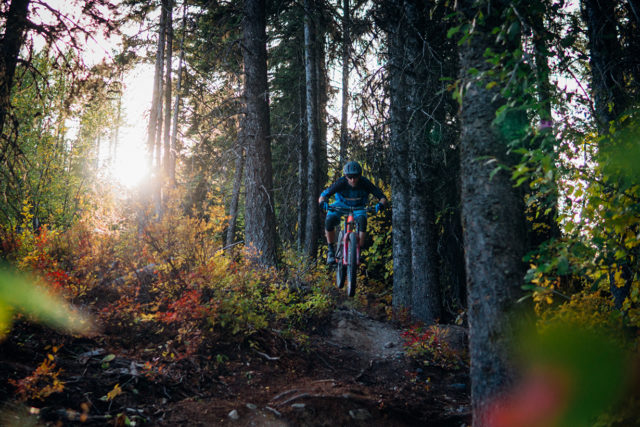
The downsides on the trail? Mostly the weight. While carbon wheels, especially expensive ones, are kind of presumed to be light, the M7 wheels are actually a little porky. On my scale, the wheelset comes in at 2069 grams (with the protective rim strip, without valves). That’s around 70 grams more than what Enve says they should be on the website, and you could save 50 grams or so by going with the lighter Industry Nine hubs instead of the Chris Kings. But those details aside, that’s still pretty heavy for a carbon wheelset — you don’t have to look very hard to find a wheelset with a comparable rim width and comparable intentions that weighs 200 grams less (or more). And 200 grams, particularly in a wheel, is a fairly noticeable amount of weight. Indeed, the Enve M6 wheels are roughly 400 grams lighter in the same 30 mm rim width.
So yeah, the M7 wheels aren’t the lightest wheels I’ve ridden, and that’s noticeable while riding them. They take a bit more oomph to get up to speed. Part of the tradeoff for that weight is the protective rim strip — it weighs about 155 grams, compared to around 15-30 grams for a more traditional tape job.
But in defense of the rim strip, DH casings and some sort of foam insert are pretty standard for Enduro and DH racers these days. The M7’s protective rim strip is lighter than either of those, so if this wheel allows you to get away with a slightly lighter tire casing, or forgoing a foam insert, then it might be a net win in the weight department.
But, rim strip aside, some of the weight of the wheel is (hopefully) due to some added durability, which brings us to…
Durability and Issues
Ok, so I recognize that there’s an elephant in the room here. A certain bike media outlet published what can charitably be described as a not-particularly-glowing review of some Enve wheels. Now, those were a slightly different model than the M730 wheels I reviewed (they reviewed the e-bike version), but the fact remains, they broke the rims and it appears that they found some manufacturing defects.
Coming to any particularly worthwhile conclusions about the durability of a product in these reviews is pretty tough, mostly because I have a sample size of one. But despite that, given that other people had issues with some Enve wheels, I wanted to at least come up with the best conclusion I could regarding durability. So I spent a bit longer on these wheels before putting this review together, and I did my best to really test the M7’s durability.
I’ve put something like 700 miles on the M7 wheels in a variety of locations, and the vast majority of those miles were on trails that are appropriate for these sort of wheels. I wasn’t logging smooth XC miles, so these things got beat up a good amount. And so far, the only thing I have to report is that, as I noted above, the Chris King hubs come a bit loose sometimes. I haven’t managed to crack or damage a rim, and without having ever touched them with a spoke wrench, the wheels are still running straight and true.
Locally around Montana, our trails aren’t that rocky, and I don’t tend to destroy too many wheels here. But this spring I took my annual-ish pilgrimage to Moab, which has plenty of opportunities to smash rims on square-edged rocks. Of course, running proper tire pressure does a pretty good job of protecting the rim … so I made a point of not doing that.
I’ll usually run somewhere around 28 psi in the rear, so I took a run down Captain Ahab with the M730 wheels and 17 psi in my rear tire. I’m aware that some people run roughly that pressure on a regular basis, but I am not one of those people, and I remain confused about how that works. They must be smoother than me, because anything less than 20 psi feels like a flat tire to me. Now, I’m rounding a bit, but running 17 psi resulted in a rim strike on a rock every 8 seconds or so. It felt … abusive. Like, I felt bad for my bike. But, notably, the rim was fine. And I didn’t get a flat tire (although I did burp a bit of air out).
And there were plenty of other rim strikes on other trails with similar results. That wash near the bottom of Porcupine Rim that has a tricky ~3 ft ledge to get up? There’s a good picture of it on Enve’s M730 webpage with one of their team guys smashing his rim. My preferred method of attack is similar to the Enve team guy — just kinda smash into it. It works, but I’ve dented plenty of rims there in the past. Similar smashiness with the M7 resulted in a rim strike, but no damage and no flat tire (again, even with low pressures). And there are plenty of other instances with these wheels where I can specifically recall tagging a rock, bottoming out on the rim, and continuing to ride without issue.
I also took a good look at the rims with the rim strip pulled off to see if I could find anything that looked like a defect or mislaid carbon. And while I’m not a carbon expert, nothing looked out of place to me. Everything seemed uniform, and more or less similar to a variety of other carbon products I’ve inspected.
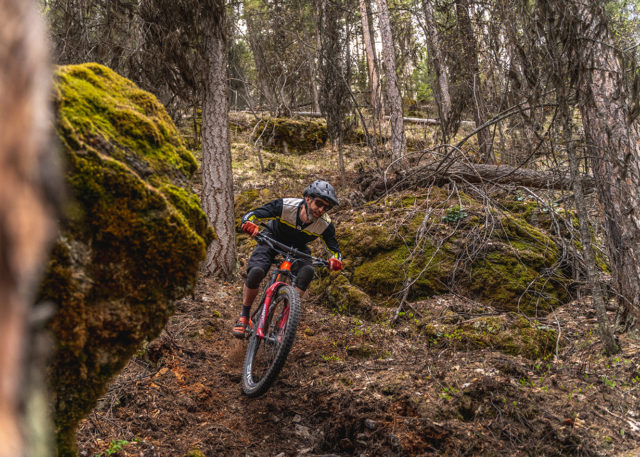
So is this a definitive conclusion regarding the durability of these wheels? No, clearly not. But I tried to break them, and I didn’t. While acknowledging that others have had issues, my take is that these things are not fragile (at all), and while anything can be broken with enough effort or bad luck, I believe that it would take some serious doing to get these to explode. And just as importantly, my testing seems to indicate that the protective rim strip works — I have no flats to report.
And there’s also the news that Enve recently expanded their warranty coverage for these wheels, and now has a lifetime incident replacement policy. So if you break your rim while riding, or if you drive into your garage with your bike on the roof, Enve will replace the wheel for free. Of course, no one wants to have to use a warranty, and this sort of lifetime guarantee isn’t unique to Enve, but it’s at least a little peace of mind for a high-dollar product.
Bottom Line
Compared to prior generations of 7-Series Enve wheels, their current M7 wheels are less appropriate for most riders. While the M7 wheels still retain the excellent ride qualities that I’ve come to associate with Enve wheels, they opt for burliness and flat prevention over light weight. Given the plethora of other lighter options on the market (including lighter options from Enve), the M7 wheels are situated in a somewhat narrow spot.
But if your goal is flat prevention and burliness, is that weight worth it? On the issue of burliness, I’m not positive it is — there are other rims that hold up well that are lighter. But on the issue of flat prevention, I’d say yes, if you’re racing. Flats suck, and if you’re racing, a flat will pretty much instantly take you out of contention. My take is that the M7’s protective rim strip does work, and it does significantly reduce the number of flats I get. So even if you’re already running heavy casings and a foam insert, the M7’s rim strip is another worthwhile line of defense. Or you can look at it as a way to run a lighter casing or forego an insert, the net result of which would be a lighter wheel / tire setup.
So while these wheels aren’t for everyone, I’d say they’re a good option for someone who (1) is looking to avoid flat tires, and (2) puts a high value on ride quality. And of course, quality spokes and hubs, a made-in-America product, and a solid warranty help back all of that up.

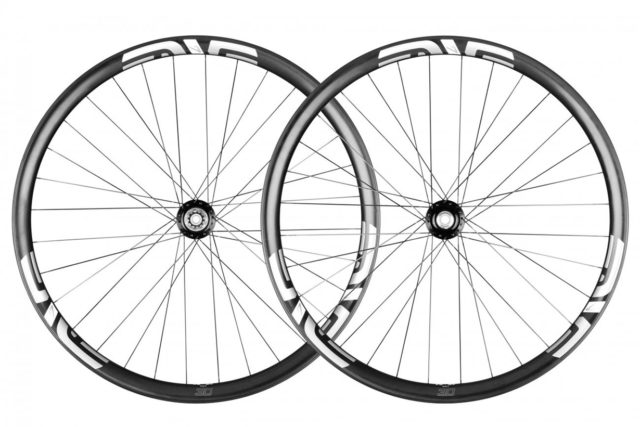
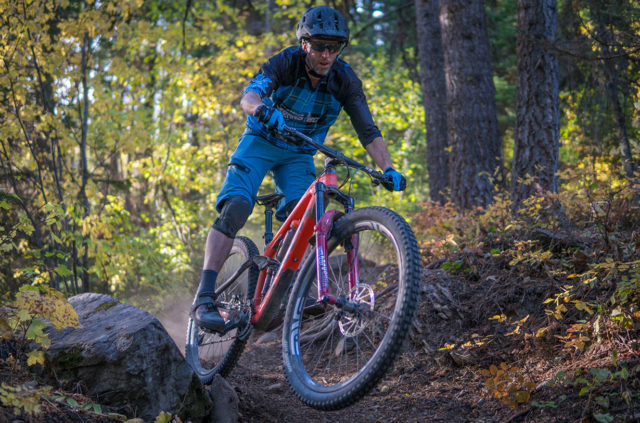
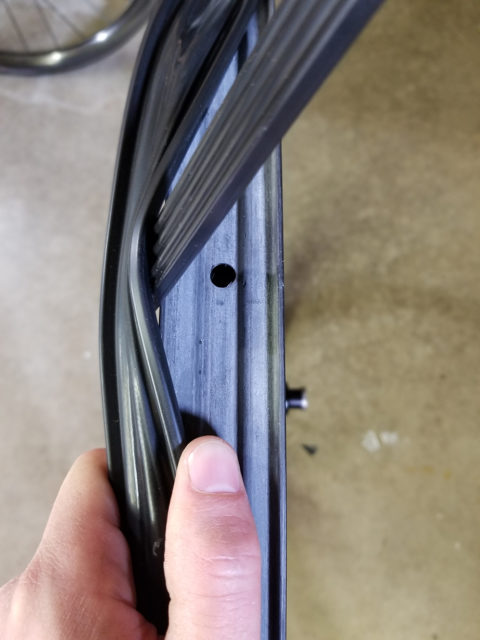
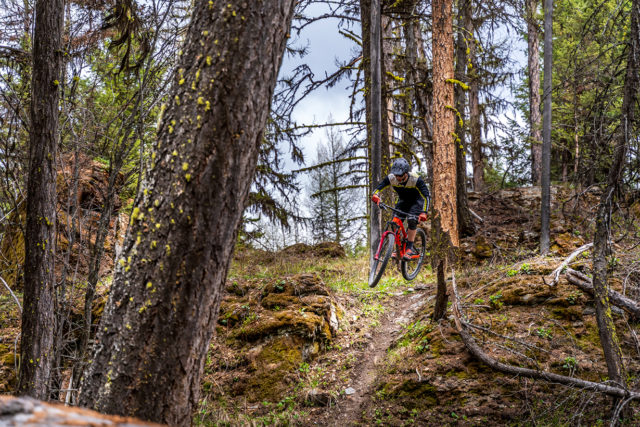
As usual, a top notch review. Tell me what I want to know, spare me the sensationalism and marketing parrot. Sounds like good wheels for a very specific type of ride. Cheers!
I have had the exact same problem with my Chris King hubs/enve m70 combo loosening for the last two seasons. I thought I was losing my mind. Glad I am not the only one. did you reach out to King at all for a solution? cheers
Hey Jeremy,
I never bugged CK about it, mostly because I’d had other King hubs in the past do the same thing, and eventually they settled in and stayed tight. These seem to be doing that as well. Still annoying for the first ~500 miles though!
Thanks Noah. I live in Portland. CK is local and they’re customer service has been solid. I’m going to have them take a look at mine next week. I’ll report back if there is anything groundbreaking